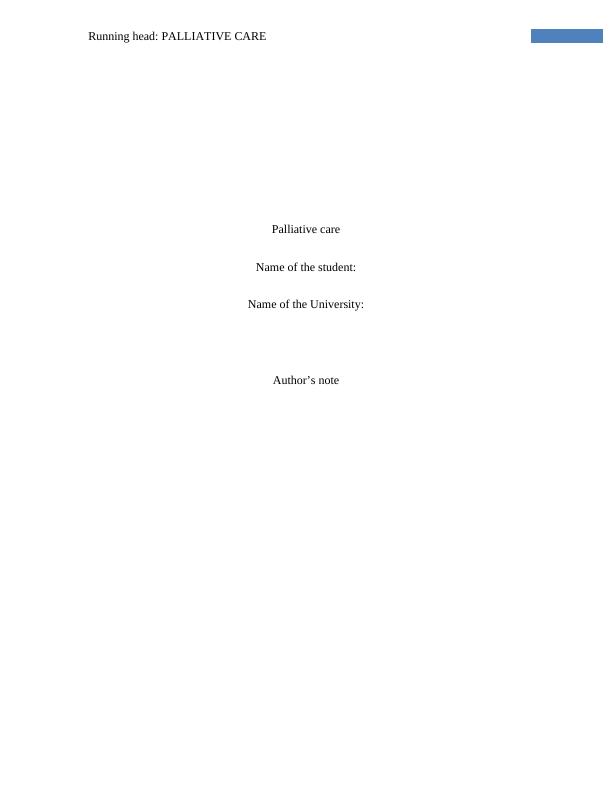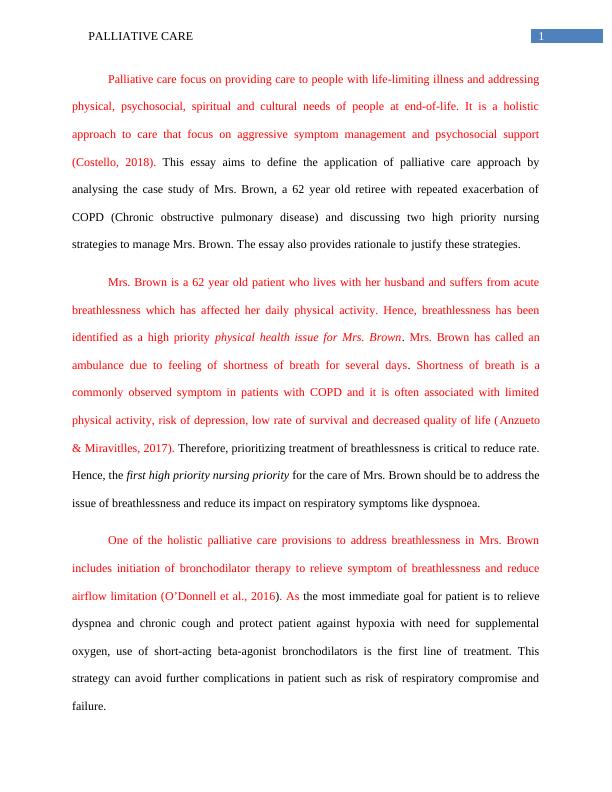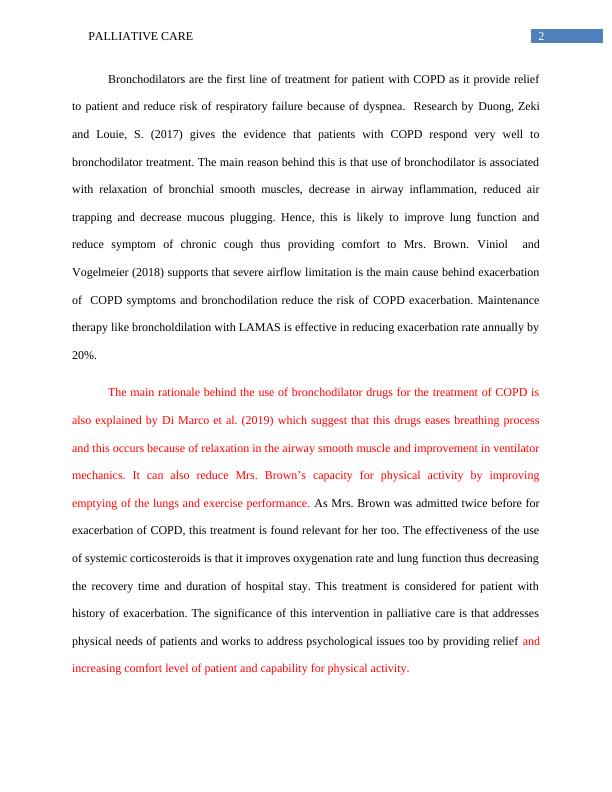Palliative Care: Strategies for COPD Patients
7 Pages1829 Words101 Views
Added on 2023-04-21
About This Document
This essay explores the application of palliative care approach for COPD patients by analyzing a case study and discussing two high priority nursing strategies to manage symptoms. The first strategy focuses on addressing breathlessness through bronchodilator therapy, while the second strategy involves providing social support and implementing cognitive behavioral therapy to address depression and anxiety. These interventions aim to improve the physical and psychological well-being of COPD patients.
Palliative Care: Strategies for COPD Patients
Added on 2023-04-21
ShareRelated Documents
End of preview
Want to access all the pages? Upload your documents or become a member.
Palliative Care: Holistic Approach and Nursing Priorities for COPD Patients - Case Study Analysis
|7
|1901
|383
Palliative Care for COPD Patients
|8
|2043
|96
Palliative Care: Strategies for COPD Exacerbation Management
|6
|1682
|50
Palliative Care for Mrs. Brown: Nursing Priorities in COPD
|7
|1773
|28
Palliative Life Care
|8
|2002
|74
Palliative Care: Nursing Priorities and Interventions
|7
|1806
|71



